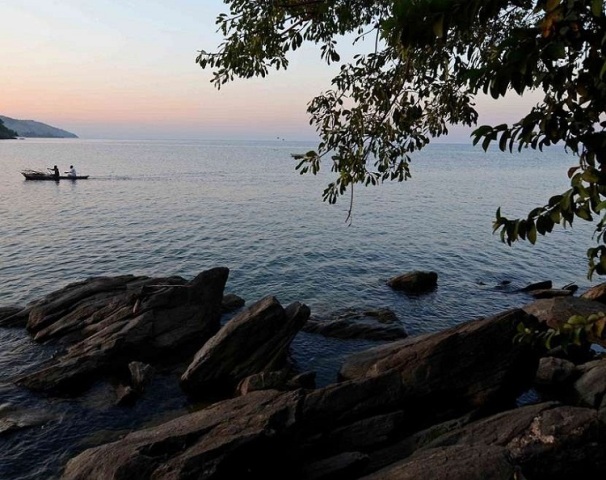Have you ever wanted to know more about the African nation of Malawi? Read on to find out more about the Republic of Malawi here.
Facts About Malawi
The republic of Malawi, or Nyasaland, as it was known earlier, is a landlocked country located in the southern part of the African continent. The country shares its borders with Zimbabwe, Tanzania and Mozambique. Malawi is spread over an area of 118,484 sq km and is separated from Tanzania and Mozambique by Lake Malawi. For most of its time, the nation of Malawi was ruled by the indigenous population till the British colonized it in the late 19th century. The country of Malawi is also sometimes referred to as the ‘Africa for Beginners’ or the ‘Warm heart of Africa’. Between Mount Mulanje and the Nyika National Park, Malawi can show anyone everything from rugged mountain terrain to endless rolling grasslands. Being a largely agricultural country, currently, Malawi is facing some serious developmental challenges along with the disturbingly prevalent presence of HIV/AIDS. One of the many things that is holding the progress back is the precarious situation with the food supply since the country is prone to both droughts and extreme rainfall.

Interesting & Fun Facts About Malawi
-
Shards of stone implements and remains found in the region of Lake Malawi suggest that the earliest settlements in Malawi could have been as far back as 50,000 to 60,000 years ago.
-
Human remains dating all the way back to 8000 BC have also been found in Malawi.
-
During the pre colonial part of Malawi, the Maravi Empire ruled Malawi from 1480 to 1600.
-
It was during the reign of the Maravi Empire that the country first came in contact with Europeans.
-
The main trade with the Portuguese was done in ivory, slaves and iron.
-
After the Maravi kingdom, came the Ngonde Empire in the 1600’s and the Chikulamayembe in the 18th century.
-
It is from the Empire of Maravi the country is thought to have derived its name from.
-
The first significant contact with the Europeans came in 1859 with the arrival of David Livingstone, a Scottish missionary, when he landed on the banks of Lake Malawi.
-
In 1891 the British finally set up the ‘British Central Africa Protectorate’ and Malawi, then Nyasaland, became a part of it.
-
After 73 years of being a protectorate of Britain, Nyasaland finally gained independence on 6th July 1964 when it finally adopted the name of Malawi.
-
Malawi adopted its constitution on 18th May 1994 and formed a legal system that is based on the English common and customary law.
-
The city of Lilongwe is the capital of the country. It is also the largest city in Malawi.
-
The official currency is kwacha (MK).
-
The total population of Malawi is 15,447,500 (as of July 2010) of which nearly 80% are Christians. The other major religion followed is Islam by 12% of the population.
-
The official languages of Malawi are English and Chichewa, spoken by 52% of the population. Other languages spoken in Malawi are Chinyanja, Chiyao, Chitumbuka, Chisena, Chilomwe, and Chitonga.
-
The terrain of Malawi is a mix of rolling plains with long plateaus and some mountains.
-
The lowest point in Malawi is the junction of the Shire River and the international border it shares with Mozambique which is at a height of 37 m (121 ft).
-
The highest point in Malawi is Mount Mlanje, also known as Sapitwa, which stands at a height of 3,002 m (9847 ft) tall.
-
Malawi is rich in natural resources like limestone, deposits of uranium, coal, and bauxite.
-
The most prominent feature of the country is ‘Lake Malawi’ which stretches to an impressive 580 km in length.
-
If you are going to see Malawi, then the best time is between the months of May and November when the temperature is cool and the vegetation green.
-
The months of October and November are the best to go in, if you are looking to see some wild life.
-
Even today, like in times of the empires of the past, the economy of Malawi is greatly dependent on agriculture, which forms about 90% of the country’s export revenues.
-
The main exports coming out of Malawi are Tobacco, tea, sugar and cotton.
See also
More from iloveindia.com
- Home Remedies | Ayurveda | Vastu | Yoga | Feng Shui | Tattoos | Fitness | Garden | Nutrition | Parenting | Bikes | Cars | Baby Care | Indian Weddings | Festivals | Party ideas | Horoscope 2015 | Pets | Finance | Figures of Speech | Hotels in India : Delhi | Hyderabad | Chennai | Mumbai | Kolkata | Bangalore | Ahmedabad | Jaipur
- Contact Us Careers Disclaimer Privacy Policy Advertise With Us Lifestyle Sitemap Copyright iloveindia.com. All Rights Reserved.







